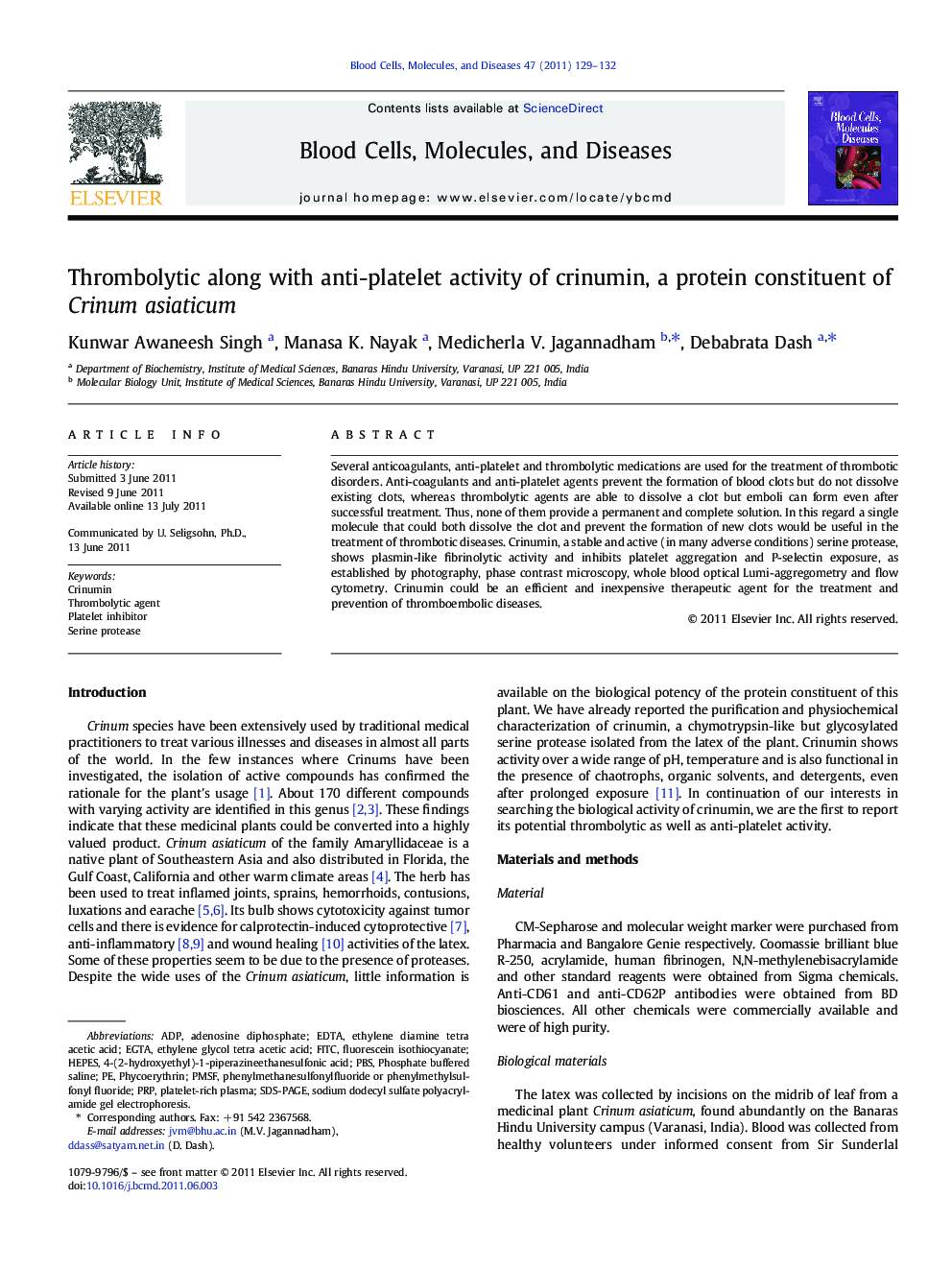| Article ID | Journal | Published Year | Pages | File Type |
|---|---|---|---|---|
| 2827549 | Blood Cells, Molecules, and Diseases | 2011 | 4 Pages |
Several anticoagulants, anti-platelet and thrombolytic medications are used for the treatment of thrombotic disorders. Anti-coagulants and anti-platelet agents prevent the formation of blood clots but do not dissolve existing clots, whereas thrombolytic agents are able to dissolve a clot but emboli can form even after successful treatment. Thus, none of them provide a permanent and complete solution. In this regard a single molecule that could both dissolve the clot and prevent the formation of new clots would be useful in the treatment of thrombotic diseases. Crinumin, a stable and active (in many adverse conditions) serine protease, shows plasmin-like fibrinolytic activity and inhibits platelet aggregation and P-selectin exposure, as established by photography, phase contrast microscopy, whole blood optical Lumi-aggregometry and flow cytometry. Crinumin could be an efficient and inexpensive therapeutic agent for the treatment and prevention of thromboembolic diseases.
► First report to explore the thrombolytic activity of crinumin. ► Crinumin has also a potential anti-platelet activity. ► May helpful to develop a multifunctional drug regarding the thrombus related diseases.
